Excerpts from an Analysis of the BABOK
This page contains diagrams showing useful information from the Business Analysis Body Of Knowledge, version 3 (BABOK). The diagrams are generated from an analysis model of the BABOK.
- If you have access to Visual Paradigm, the model is available for download from here
- A description of this model can be downloaded here
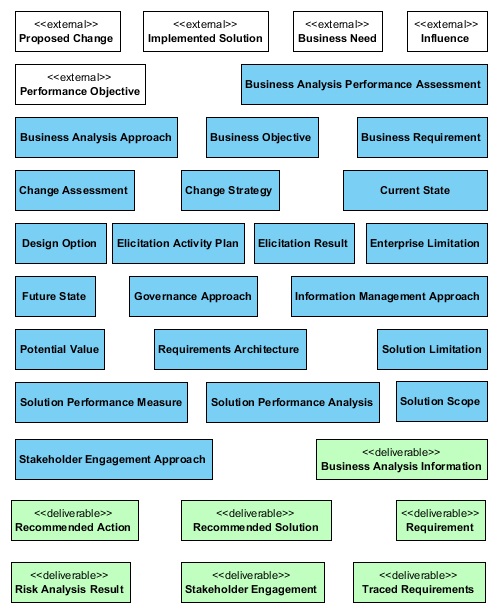 |
The artifacts overview diagram shows all the artifacts in the BABOK. Artifacts are a consolidation of all inputs and outputs of BABOK tasks. Those shaded white are external inputs and therefore not produced by the business analyst. Artifacts shaded green are outputs from the business analysis process. They are delivered to external stakeholders, (and they may also be inputs to business analysis tasks).
|
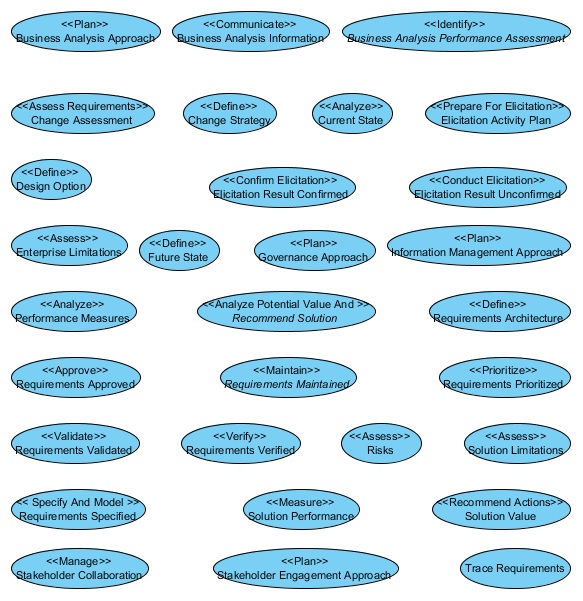 |
The tasks overview diagram shows all tasks contained in the BABOK. Tasks are the primary components of the BABOK. Artifacts, Guidelines and Tools and Techniques are all described in terms of the tasks that use them. Tasks are named according to the primary artifact they produce. The task action is added to the task name as a stereotype. |
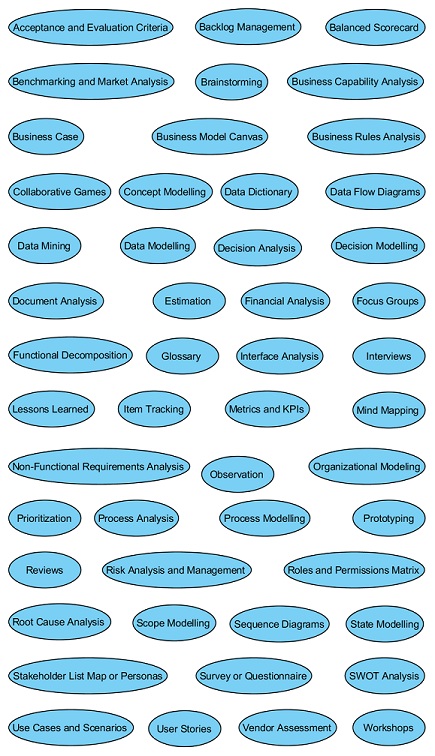 |
The techniques overview diagram shows all the techniques documented in the BABOK. Techniques are instructional guidelines that provide additional methods for producing the output artifacts. A technique contains instructions for producing one or more artifact elements. Not all techniques are necessarily applicable to production of an artifact. The business analyst may choose which to apply to their particular situation. |
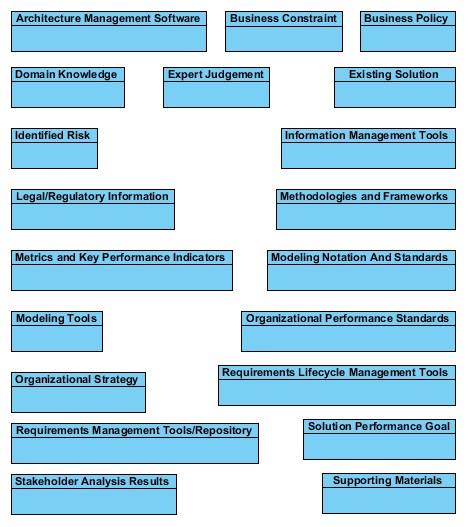 |
This diagram contains a summary of guidelines and tools that are not artifacts. Guidelines and tools are shown as inputs to BABOK tasks. They provide information about how to perform the task, or they assist with producing the outputs from that task. Artifacts may also be guidelines (not shown on this diagram). |
 |
The stakeholders diagram shows the different types of stakeholder that are described in the BABOK. A stakeholder is a person who plays a role that interacts with 1 or more artifacts during the analysis process. A stakeholder provides input to the manufacture of the artifact or they take ownership of an artifact when it is completed. Stakeholder input may be in the form of information, guidance or approval. |
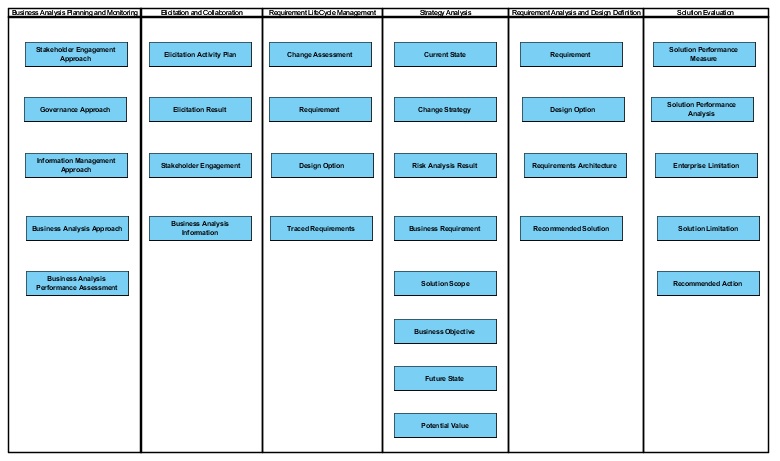 |
The knowledge areas overview diagram shows the 6 BABOK knowledge areas and the artifacts that are updated within each knowledge area. These knowledge areas and their related artifacts are as follows:
- Business Analysis Planning And Monitoring - Stakeholder Engagement Approach, Governance Approach, Information Management Approach, Business Analysis Approach and Business Analysis Performance Assessment
- Elicitation And Collaboration - Elicitation Activity Plan, Elicitation Results, Stakeholder Engagement, Business Analysis Information
- Requirements Life-Cycle Management - Change Assessments, Requirements, Design Options, Traced Requirements
- Strategy Analysis - Current State, Change Strategy, Risk Analysis Results, Business Requirements, Solution Scope, Business Objectives, Future State, Potential Value
- Requirements Analysis And Design Definition - Requirements, Design Options, Requirements Architecture, Recommended Solution
- Solution Evaluation - Solution Performance Measures, Solution Performance Analysis, Enterprise Limitations, Solution Limitations, Recommended Actions
|





